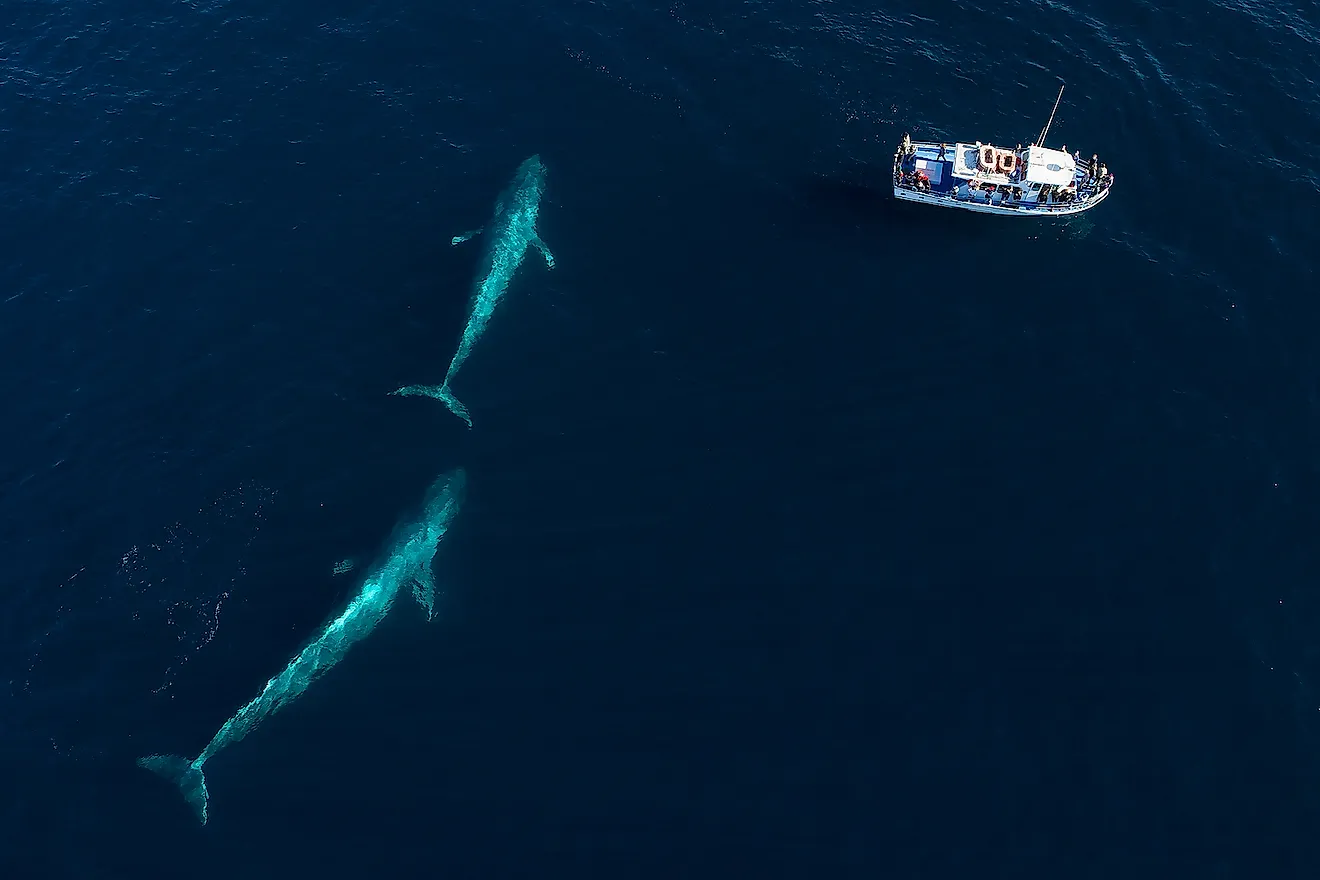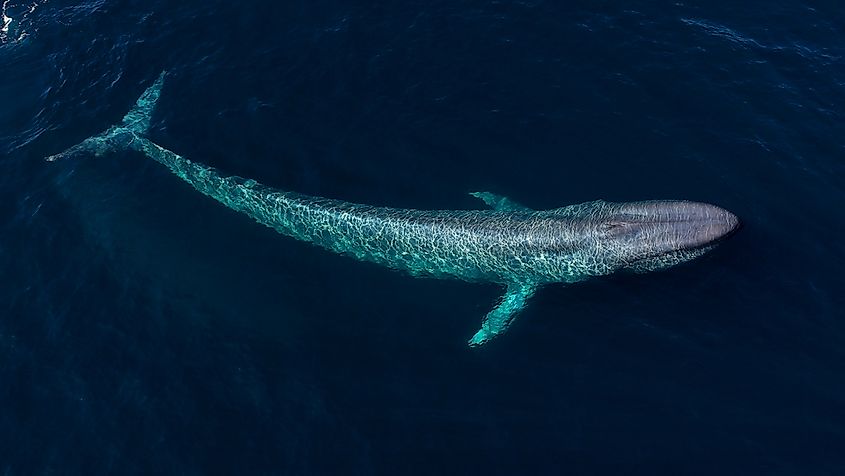Where Do Blue Whales Live?

- If you were to see a blue whale in the Northern Hemisphere, it would most likely be off the coasts of Baja California, Mexico, and Monterey, California, or near the Gulf of St. Lawrence.
- The majority of their summers are spent in the polar waters, where they feed on specific type of crustaceans called krill.
- Blue whales usually travel at the speed of 5 mph but can reach speeds up to 20 mph if necessary.
- During the wintertime, blue whales migrate closer to the Equator and breed there.
Blue whales are the largest animals that have ever lived on our planet. Whenever someone thinks of a whale, it is more than likely that they are thinking of a blue whale. These majestic animals can grow up to 100 feet long and weigh up to 200 tons. They are marine mammals that have impressed humankind since forever.
Their size is even more impressive when we take a look at some of the more interesting facts, like that their tongues weigh as much as an elephant, or that their hearts can weigh more than an average automobile.
If you were to see a blue whale in the Northern Hemisphere, it would most likely be off the coasts of Baja California, Mexico, and Monterey, California, or near the Gulf of St. Lawrence. Let’s explore other interesting facts about the blue whale in the remainder of this article!
The Habitat And Habits Of Blue Whales
Blue whales can often be found either alone or in pairs but occasionally in groups, roaming the oceans. These whales can be found in all oceans except for the Arctic. They are generally more common in the Southern Hemisphere.
The majority of their summers are spent in the polar waters, where they feed on specific type of crustaceans called krill. The blue whale can often be seen performing rolls and turns with its entire body to locate its prey and grab as much of it as possible by changing its direction rapidly.

It is estimated that an adult blue whale eats somewhere around eight tons of krill every day. It makes sense that an animal as big as this requires a lot of food. During the wintertime, blue whales migrate closer to the Equator and breed there. The gestation period lasts about 12 months, and the result is a single calf that is 26 feet long on average. These small blue whales are always born in temperate waters. During the nursing periods, the calves gain almost 200 pounds every day by feeding on the rich milk of their mothers. After eight months, the young reach a length of about 49 feet and start to eat other food.
Majestic Endangered Animals
As their name says, blue whales are blue, with a shade of gray. They have large light gray spots all over their bodies that almost look painted. Many call the blue whale the sulfur bottom whale because the underside of their bodies is often yellow. This color is incredibly reminiscent of the element sulfur, which is where the name originated. However, they get this color through specific algae that live on their bodies. Blue whales generally have large heads and small dorsal fins. The mouth of a blue whale is covered with 800 plates of baleen, also known as whalebone. They use these to catch food.
The number of blue whales was greatly reduced in the 20th century, mostly because it is one of the most commercially hunted whale species. It is estimated that more than 29,000 of them were killed during the years 1930 and 1931. Since the mid-1960s, blue whales have been protected from whaling.
The species seems to be recovering, and it is believed that there are currently anywhere between 10,000 and 25,000 blue whales on the planet. The blue whale is still considered an endangered species and will continue to be considered one at least for some time until we are sure that their numbers have recovered.











